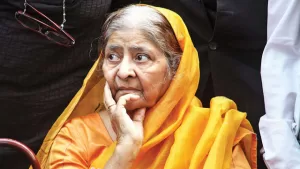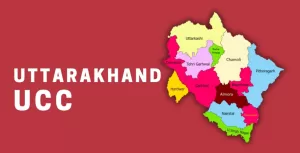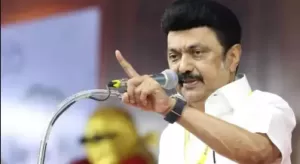Book Review
I Could Not be a Hindu: The Story of a Dalit in RSS
Raghuram Meghawanshi
An organisation which claims to work for Hinduism, Hindu unity and consolidation needs to address the discriminatory practices in religion by rising above the caste-based identities. It needs to be more reformative in nature rather than revivalist and work towards annihilating caste rather than reinforcing caste based discriminatory practices. The book by Raghuram Meghawanshi ‘I could not be a Hindu: The story of a Dalit in RSS’ shows the hypocrisy of RSS on Caste issue. It reveals how Meghawanshi transformed from an RSS activist to a Dalit activist. His humiliating experiences in RSS as a Dalit and his work towards exposing RSS are detailed out.
Meghawanshi is a Dalit and was very active as an RSS worker. During the peak of the Ram Janambhoomi movement in the 1990’s as a Karsevak he believed that Lord Ram needs to be liberated from the clutches of Muslims. And by liberating Lord Ram they would liberate the country. During the train journey to Ayodhya, he even participated in slogans targeting the minority community. The slogans were hate filled against Muslims.
Induction into RSS began at an age of thirteen years through participating in shakhas. His interest in sports drew him to shakhas where besides sports, there were additional elements such as songs, yoga exercises, intellectual inputs, and prayers. Questioning was not allowed in the shakhas. He internalised RSS ideology and soon rose up in the hierarchy to become chief district level teacher.
The commands in the Shaka were in Sanskrit. Prayer to motherland ‘Namaste sada vatsale mathrubhoomi’ was sung. Yogic postures were performed. There used to be games such as ‘Ram-Ravan’, ‘Delhi is ours’ etc. Six festivals were celebrated. The uniform ‘ganvesh’ consisting of white shirt, black cap, khakhi shorts was compulsory. Intellectual inputs were about Hindu gods, Hindu kings, and songs about Hindu rashtra. It sought to build ideas of Hindu pride and Aryan supremacy. People other than Hindus were depicted as outsiders and unloyal as their religious connections were said to be with Mecca Madina, Vatican, and Jerusalem. Muslims were described as violent goons.
In the RSS, there were two types of sangh activists – Pracharaks and Vistaraks. Pracharaks led simple lives travelling around and preaching. Vistaraks expanded the sangh network. Expenses of functionaries were met through contributions made to Guru which is associated with symbolic ‘flag’. Collections are kept in custody of a rich Swayamsevak who are usually traders and businessmen. They released money to pracharaks and vistaraks based on the need and request.
Sangh had its own way of organizing which included eleven regions, forty-one states and each administrative district divided into two or three sangh districts. There were pracharaks and vistaraks in the district and individual swayamsevaks at the grassroot level. Above Swayamsevak, there was gatanayak, gananayak, chief teacher, shakha manager and mandal official. At the top were pracharaks, karyavahs and sanghchalaks. Sarkaravyah and Sarsanghchalak were at the very top. There have been six sarsangchalak of which five are from brahmins and one from kshatriya. None of the pracharks were from Dalits, Adivasis and Backward classes. It does make it an almost impossibility for them to become sarsanghchalaks. There is low representation of Dalits and Adivasis in Akhil Bhartiya Pratinidhi Sabha and Akhil Bhartiya Karyakari mandal. Though many from Dalits and Backward groups joined karseva campaigns during 1990-1992, very few Dalits have become pracharaks. None among Dalits and Adivasis had reached to national level organization.
While shakhas are aimed at building individuals, other social bodies reach out to other target segments. These include Rashtriya sevika samiti for women, Akhil Bhartiya Vidyarthi parishad for students, Vanavasi kalyan ashram for adivasis, Bhartiya mazdoor sangh for traders, Saraswati shishu mandirs for pre-schoolers. Besides these there are Bajrang dal for young men and Durga vahini for young women. There are also organizations for farmers, writers, intellectuals, journalists, and filmmakers. There are publication houses and numerous NGOs associated with RSS.
From things other than shakhas, exposure to RSS literature such as weekly ‘Panchajanya’ had turned Meghawanshi into a fanatic. Ideas of Muslims celebrating Pakistan victory, having four wives and forty children, young Muslim men enticing Hindu girls and converting them to Muslims were deeply internalised. As a karyavah, apart from conducting shakhas on a daily basis, he also participated in block level meetings where ideas to expand shakhas were discussed.
Meghawanshi became aware of caste discrimination when he expressed desire to become a full time pracharak by giving up family life. He was told that moment his marginalised identity is revealed, others might object, and it would weaken sangh work. Hence, he can focus on becoming a vistarak. His thinking mind as a vicharak was also considered dangerous and was told that only the message from Nagpur had to be executed without questioning. The fear that he might turn into a vicharak made Bhilwara pracharak to take him out of the Ambedkar hostel which was felt would corrupt his ideology.
The second event of caste discrimination was when an event was organized in Meghawanshi’s village a Dalit basti during Asti kalash yatra. The family had prepared poori and kheer. When the sangh office bearers were invited for meal, there was hesitation. They mentioned that sadhu sants might be upset to eat at a lower caste home. The food could be packed and would be served in the next village. He came to know that the food was not eaten but was thrown away. Instead, meal was taken at home of a brahmin. The incident hurt Meghawanshi and was a turning point in his life from RSS supporter to RSS critic.
He demanded an explanation for the same to which he did not receive convincing answer except a statement not to spread negativity. Discrimination was considered normal. Meghawanshi became conscious of his Dalit position in RSS. While he could be a vistarak, he could not become pracharak. His caste identity mattered a lot in RSS and untouchability too was practiced by office bearers. The disappointment also led to suicidal attempt, whereby he consumed poison. He was rescued by elder brother who ensured his immediate medical assistance.
These experiences convinced Meghawanshi that if Dalits did not have a proper place in RSS scheme of things, things would not be different in Hindu Rashtra. He went ahead and presented the case of discrimination to Swayamsevaks, office bearers and pracharaks. None thought caste discrimination and untouchability was an important issue. For Meghawanshi, hence now the battle was for self-respect and for justice and equality. Ram temple no longer attracted him.
He enrolled into graduation and was part of Vidhyarthi adhikar rakshak sangh (VARS). VARS provided an alternative to ABVP and took up student issues and kept them away from casteism and communalism. In the process of reaching out to RSS critics, he came in touch with Maulana Ashad who started Hyder-e-karrar an Islamic seva sangh and he himself started Dalit action force. He also thought of religious conversion and attempted conversion to Christianity. The inner rebel made him realise that he was not religious and did not seek a place in heaven. He became convinced that all religions are rigid and irrational. Each religion believed that they were superior to others and wanted to convert others.
Search for alternative views brought him in touch with Ambedkar’s writings. Ambedkar’s thoughts made him realise that his understanding on Amdbedkar built in RSS as a nationalist, who stood for Sanskrit as national language and saffron flag as national flag was wrong. Directly reading of Ambedkar’s works such as ‘Annihilation of caste’ made Megawanshi realise he stood for ending caste discrimination and annihilating caste instead of preserving it. Songs in shakhas idolised Manu and Ambedkar stood against Manusmriti. His Dalit perspective were strengthened. He also went through the writings of Periyar, Phule, Lohia, Marx, Engels, Krishnamurthi. Egalitarian thoughts took roots.
Meghwawanshi came across a secret letter of the Sangh which was addressed to upper castes. It appealed to strengthen caste system as it believed otherwise everyone would become Muslim or Christian. They were advised to bring Dalits, Adivasis and Backward castes under Hindutva. They were instructed to include these groups but in an inferior position. Journal Sanyukt Ekta by Khudril published the letter. Interactions with other Dalit swayamsevaks on this issue made him realise that other Dalits too in RSS went through similar experiences. Dalits and Adivasis were used as tokens without giving them respect and dignity.
Meghanwanshi got involved in fight against communalism, one of which included signature campaign against burning of Australian missionary Graham Staines. A monthly magazine called Diamond India was launched which attacked communalism, casteism and corruption. Diamond India published investigative reports. It also reported on convention of Right to Information conducted by Mazdoor kisan sangathan Samithi (MKSS). He also participated in its social audits of panchayats. MKSS also believed in the ideas of Ambedkar, Phule, Kabir, Periyar and believed that as long as discrimination, oppression and inequality continue, reservation should continue.
During teacher training in Maandal, traditional practice of welcome through tying turban and applying tilak was opposed. Similarly, prayer of Goddess Saraswati was opposed and so was a song on RSS. The school in which he was appointed teacher was a village of Gurjars who practiced untouchability and were not so welcoming of a Dalit teacher.
RSS had adopted the strategy of appropriating Dalit saints portraying them as warriors against Mughals as was done with Ramdev Pir. For other religions, it made false propaganda. Ajmal Tanwar’s sect was depicted as one which practiced free sex. Sailani sarkar was propagated as an ISI agent. Meghawanshi researched and exposed the lie behind the myths and propaganda.
In Bhilwara, a mosque Qalandari Masjid was brought down by gurjar community who were brought under the fold of Hindutva. A team from human rights organizations, MKSS, PUCL visited Asind. While sawaibhoj temple trust denied existence of mosque, Meghawanshi produced proofs to establish its existence which included photographs. After mosque demolition, ashwamegha yagna was to be performed to purify the premises by Khandeshwari Baba. Dalits were not allowed to sit around sacrificial fire. Yagna was cancelled and was performed in private land. A shivsena person Govind Mundra compared this with ancient days rakshasas and demons who stopped yagnas.
In Gujarat carnage that followed, there were incidents such as that of Gulberg society, Naroda patiya, Meghawanshi participated in public hearing tribunal by Concerned citizens tribunal. Many of the victims were spoken to. Many of the violence which happened against Muslims were conducted by Dalits and Adivasis. The office bearers of the organisations affiliated to Sangh were from avarna but foot-soldiers Dalits, Adivasis Backward castes who were used for attacks on Muslims. On returning back, an editorial namely ‘Listen Taliban Hindus’ was written. A peace rally was organized in Rajasthan for peace against the Gujarat massacre. Haresh Bhatt, Pravin Togadia and Kaluram Sankhla Hindutva activists were whipping up frenzy against Muslims. Due to pressure built on the Government, Ashok Gehlot government arrested Praveen Togadia.
During the peak of the Thrishul deeksha organized by VHP, three Dalits and valmikis were given thrishuls but were prevented from entering temple. Sangh was challenged on their plans for Dalits and Adivasis in Hindu Rashtra. Sangh was asked why in a modern period they want to promote a primitive weapon like Thrishul and a Taliban mentality. The need to participate in Hindu rashtra where Dalits are discriminated, untouchability is practiced, and Dalits not considered as equals was questioned.
In one of the incidents, Babulal Bairwa one of VHP activist was fined Rs. 51,000 for having dared as a Dalit to bath in a public pond. Even animals were allowed to bath in this common pond. The issue was taken up by Dalit and Human rights groups. Referring to this incident and quoting Ambedkar, Meghawanshi states ‘Are not the millions of Shudras and non-Brahmins, or millions of the Untouchables, suffering the worst consequences of the undemocratic character of Hindu society?’
In Bhilwara, businesses and institutions run by minorities were targeted. One of this included a school run by Emmanuel International School. Gangwar in underworld in one instance was given a communal colour and violence was incited. Due to the rumours that were spread, Hindutva groups Muslims clashes followed. Muslim men were arrested and abused as ‘Pakistan dogs’ by the police. Idols being broken in temples and colour being thrown in mosques became common with no clarity on who was responsible. PUCL published a report ‘The approaching footsteps of fascism’. The report exposed Hindutva politics, its conspiracies and its role in fermenting communal violence and partisan role played by police and administration.
A complaint was launched against Meghawanshi. Many like Aruna Roy, Kuldip Nayar, Harsh Mander, Arundhati Roy, Bharat Dogra was reached out to. Prashant Bhushan placed the case before NHRC. PUCL extended assistance. As the issue became national, the state government withdrew but social boycott continued.
In Suliya village, Gurjari priests physically attached and threw out Dalit priests from a temple of Suliya Mata. The temple was built by ancestors of Dalits. Entering temple was a matter of rights guaranteed under the constitution. Centre for Dalit rights, MKSS, PUCL declared that if administration did not ensure temple entry of Dalits, matters would be taken into hands. VHP tried to portray the struggle of Dalits as one sponsored by multinational companies. The district administration gradually came to know that Dalits were not merely fighting for temple entry and prasad but for equality. This event thought Dalits on how to organize, conduct a struggle and achieve victory. The movement gave birth to Dalit, Adivasi, and Ghumantu Rights Campaign (DAGAR).
While Sangh does not have a plan to address caste oppression, it considers root cause of caste oppression is a result of Muslims and not casteist Hindus. The progressive and democratic thoughts of Buddha, Phule, Kabir, Periyar and Ambedkar makes Sangh uncomfortable. It does not have a position on inter-caste marriages, reservation, ending caste discrimination. On caste issue, it tried to reach and buy out the questioning Dalits and were given appropriate positions as councillors or sarpanches. It wrote caste histories in a manner to depict it as egalitarian and placing the blame of discrimination on Muslim invaders. It appropriated Ambedkar and showed him as someone close to RSS ideology. It took to defaming progressive and left-wing organisations.
RSS tries to subvert growing Dalit consciousness. It accommodates the power hungry, self-styled leaders of Dalits like Ram vilas paswan. It also reached out to Meghawanshi who had decided never to join a communal organization and from being free from the clutches of the Sangh. The book ends by resolution by saying that he will always stand up, speak out, and fight the battle against injustice, oppression, exploitation, and inequality.
The book is a necessary reading to understand the stand of RSS on caste issue. It provides an account both from an insider’s perspective as well as a Dalit campaigners perspective.
(T. Navin is an independent writer. Courtesy: Countercurrents.org.)




